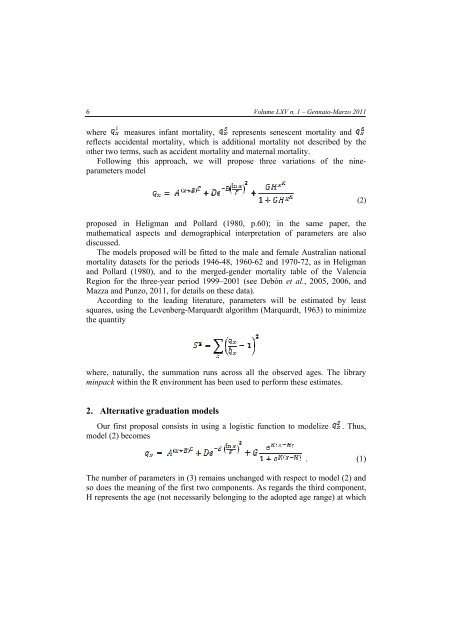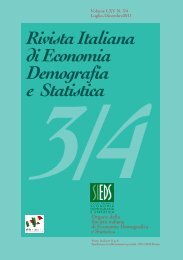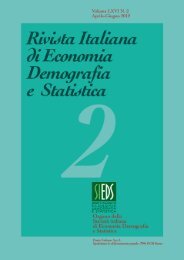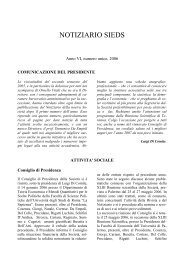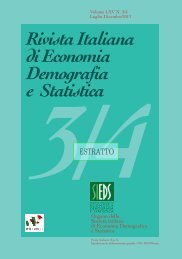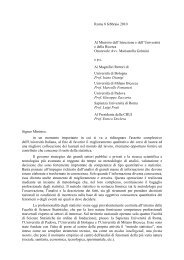rivista italiana di economia demografia e statistica - Sieds
rivista italiana di economia demografia e statistica - Sieds
rivista italiana di economia demografia e statistica - Sieds
You also want an ePaper? Increase the reach of your titles
YUMPU automatically turns print PDFs into web optimized ePapers that Google loves.
6<br />
Volume LXV n. 1 – Gennaio-Marzo 2011<br />
where measures infant mortality, represents senescent mortality and<br />
reflects accidental mortality, which is ad<strong>di</strong>tional mortality not described by the<br />
other two terms, such as accident mortality and maternal mortality.<br />
Following this approach, we will propose three variations of the nineparameters<br />
model<br />
proposed in Heligman and Pollard (1980, p.60); in the same paper, the<br />
mathematical aspects and demographical interpretation of parameters are also<br />
<strong>di</strong>scussed.<br />
The models proposed will be fitted to the male and female Australian national<br />
mortality datasets for the periods 1946-48, 1960-62 and 1970-72, as in Heligman<br />
and Pollard (1980), and to the merged-gender mortality table of the Valencia<br />
Region for the three-year period 1999–2001 (see Debòn et al., 2005, 2006, and<br />
Mazza and Punzo, 2011, for details on these data).<br />
Accor<strong>di</strong>ng to the lea<strong>di</strong>ng literature, parameters will be estimated by least<br />
squares, using the Levenberg-Marquardt algorithm (Marquardt, 1963) to minimize<br />
the quantity<br />
where, naturally, the summation runs across all the observed ages. The library<br />
minpack within the R environment has been used to perform these estimates.<br />
2. Alternative graduation models<br />
Our first proposal consists in using a logistic function to modelize . Thus,<br />
model (2) becomes<br />
(2)<br />
. (1)<br />
The number of parameters in (3) remains unchanged with respect to model (2) and<br />
so does the meaning of the first two components. As regards the third component,<br />
H represents the age (not necessarily belonging to the adopted age range) at which


